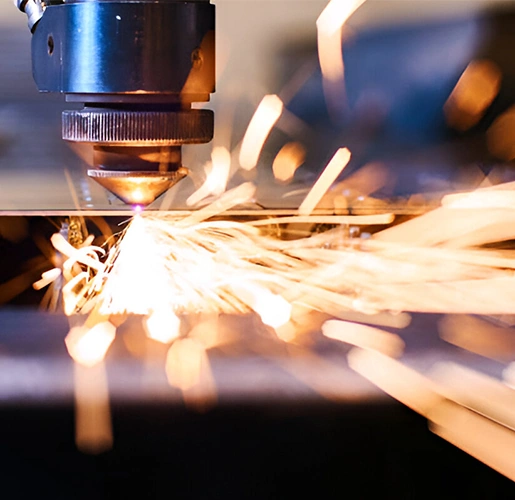
Custom sheet metal fabrication is more than just a manufacturing process – it’s the art of turning metal into solutions tailored exactly to your needs. At Michaels Sheet Metal, we specialize in creating one-of-a-kind metal products for homes and businesses across Southern California. Whether you need a unique architectural feature for a Beverly Hills home or custom ductwork for a commercial building in Los Angeles County, our expert team is here to help. We combine over 30 years of experience with modern technology and old-school craftsmanship to deliver top-quality results on every project.
Our Los Angeles-based custom sheet metal fabrication services are human-friendly and hassle-free. We avoid confusing industry jargon and work closely with you so that you understand every step of the process. From the initial concept to the final installation, our goal is to make your experience smooth, transparent, and satisfying. Keep reading to learn why Michaels Sheet Metal is the go-to sheet metal fabrication company for clients throughout L.A. County – and how we can bring your ideas to life in metal!
Why Choose
Michaels Sheet Metal for Custom Fabrication?
When it comes to choosing sheet metal fabricators for your project, experience and reliability matter. Michaels Sheet Metal stands out as a trusted leader in the industry. Here are a few reasons why homeowners, contractors, and businesses turn to us for their sheet metal fabrication services:
We’ve been in business for over 30 years under the same name and ownership, with the same commitment to quality. Our long track record means we’ve tackled projects of all shapes and sizes. You can trust our sheet metal fabrication team to know what works and to deliver time-tested craftsmanship.
Our technicians and fabricators are fully licensed, insured, and certified. We adhere to all industry standards and regulations (including SMACNA guidelines for sheet metal work) to ensure every project is done right. Your project will be handled by skilled professionals who take pride in their work and prioritize safety and quality. We’re a sheet metal fabrication company that stands behind our craftsmanship 100%.
Michaels Sheet Metal offers a full range of custom sheet metal fabrication services under one roof. We don’t just cut and weld metal – we also provide design assistance, material selection guidance, finishing, and even installation services for many projects. This one-stop-shop approach saves you time and ensures consistency from start to finish. (No need to juggle multiple vendors for design, fabrication, and installation – we do it all!)
Our workshop in Pacoima is equipped with modern machinery for precision cutting and forming, but we haven’t lost the touch of old-school sheet metal craftsmanship. We utilize state-of-the-art tools like CNC laser cutters, water jet cutters, and computer-controlled press brakes to achieve highly accurate results. At the same time, our veteran fabricators bring hands- on expertise – for example, hand-cutting and custom fitting pieces when needed (we even hand-cut every gutter corner for a perfect fit, never using generic pre-fabricated parts). This blend of technology and skill means you get the best quality metalwork possible, made efficiently and with great attention to detail.
We work with a wide variety of metals to suit each project’s needs. From classic copper and zinc for architectural accents, to durable stainless steel and galvanized steel for industrial-strength parts, to lightweight aluminum for modern designs – we have experience with them all. We even fabricate in specialty metals like brass and lead-coated copper. Whatever material is best for your project, we’ll source high-grade metal and ensure the finished product looks and performs beautifully. All our materials and workmanship are chosen to maximize longevity, so your custom piece will stand up to the elements and time.
We believe in friendly, professional service and honest communication. Unlike some companies that send out salespeople, when you contact Michaels Sheet Metal you’ll speak directly with experienced sheet metal experts. Our team will listen to your needs, answer your questions in plain language (no confusing technical talk!), and provide recommendations that make sense for your budget and goals. We even offer a “Pay When Happy” policy – you don’t pay a dime until you are 100% satisfied with the job. Customer satisfaction isn’t just a slogan for us; it’s how we’ve done business for decades.
We know your time is valuable. Because we have an efficient in-house process, we can often take your idea from drawing board to finished product quickly, without sacrificing quality. Need something on a tight timeline? Just ask – chances are we can accommodate. We also provide free quotes and consultations, so you can get started easily. Our team will help refine your concept and give you a clear estimate, with no obligations and no pressure.
Custom Sheet Metal Fabrication
Our Services
One of the greatest advantages of custom fabrication is that we can create almost anything out of sheet metal to meet your needs. Over the years, we’ve completed a huge range of projects. Below are some of the key sheet metal fabrication services we offer and examples of what we can do:
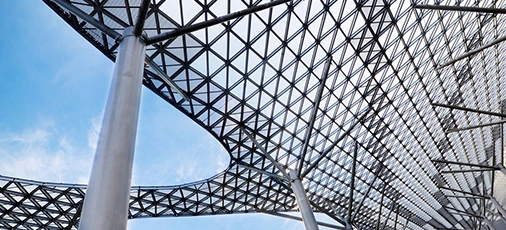
Architectural Sheet Metal & Custom Metalwork
We excel at architectural sheet metal fabrication – crafting metal elements that are both functional and visually striking. This includes custom metal wall panels, decorative fascia and trim, metal awnings, window and door pans (for waterproofing openings), and even unique sculptures or art pieces. If you’re an architect or designer looking for bespoke metal features to enhance a building’s appearance, our team can bring your ideas to life with precision. High-end residences in Beverly Hills, modern offices in Downtown LA, and public buildings across Los Angeles County have benefited from our architectural metalwork.
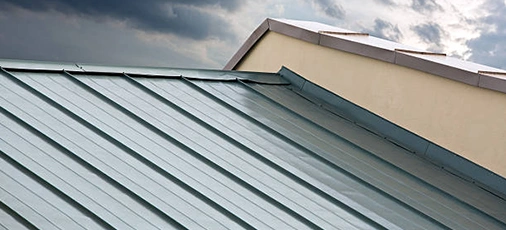
Custom Metal Roofing & Flashing
Michaels Sheet Metal designs and fabricates metal roofing components for superior durability and style. We create standing seam metal roofs, copper and zinc roof panels, and custom flashing pieces to fit any roof layout. Metal roofs are a specialty of ours – in fact, many clients have entrusted us with installing entire custom roofs. We also fabricate chimney caps, vents, and other roof accessories. Our metal roofs and flashings not only look beautiful but also offer long-lasting protection against California weather. If you need a custom-fit piece for your roof that you can’t find in stores, we’ll make it for you.
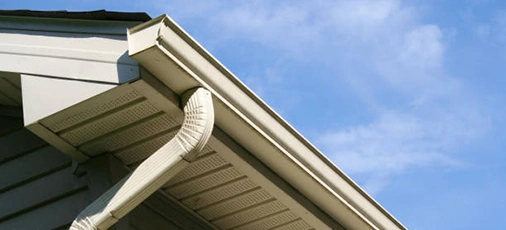
Rain Gutters, Downspouts & Leaderheads
We are known throughout Southern California for our top-tier rain gutter fabrication and installation. Whether you want traditional seamless aluminum gutters or elegant custom copper gutters, we have you covered. We fabricate gutters to exact lengths needed and create custom downspouts, elbows, and decorative leaderheads (the fancy collector boxes) to match your home or building. Our installers hand-cut and fit every corner on-site for a flawless look – no off-the-shelf corners are ever used. The result? A gutter system that fits perfectly and enhances your property’s curb appeal. From Santa Monica to Pasadena, our architectural sheet metal gutter work is protecting and beautifying homes all over Los Angeles County.

HVAC Ductwork & Custom Duct Fabrication
Properly fabricated ductwork is essential for efficient heating and cooling. We offer custom HVAC duct and pan fabrication to meet the exact specifications of your system. If you’re remodeling or building a new property and need ducts that are non-standard sizes or shapes, we can fabricate them precisely. Our team often works with HVAC contractors to create ducts for commercial buildings, restaurants, and large custom homes where pre-made duct pieces won’t suffice. We ensure that all air ducts, vent hoods, and drip pans we fabricate fit perfectly and are built to HVAC industry standards. With sheet metal custom fabrication, your ductwork will provide excellent airflow and last for decades without leaks or issues. (This means cleaner air and better energy efficiency for you!)
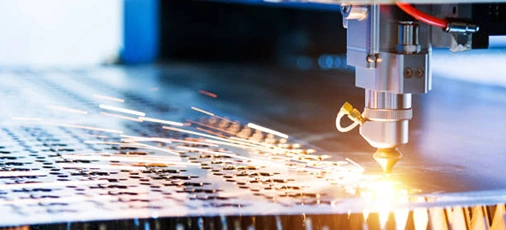
Custom Sheet Metal Cutting & Forming
Sometimes you just need a one-off metal component or prototype part – that’s where our custom sheet metal cutting and forming services come in. We can take a flat sheet of metal and cut it into intricate shapes with our laser and water-jet cutters. We can also bend and form sheet metal into brackets, frames, enclosures, or any shape required using precision press brakes and rolling equipment. Maybe you need a special bracket for a piece of machinery, a custom-shaped panel for a DIY project, or replacement parts that are no longer available – we can fabricate those from scratch. No project is too small or too unusual; our skilled sheet metal fabricators love a challenge and will work with you to create exactly what you need.

Custom Metal Planters & Outdoor Features
Looking for a statement piece for your landscape or patio? We build gorgeous custom metal planters and other outdoor features. Metal planters offer a modern, architectural look and unmatched durability compared to wood or plastic. We can fabricate planters in any size, shape, or color – whether it’s sleek aluminum planter boxes for a commercial plaza or large rustic steel pots for a garden. In addition, we craft items like metal trellises, fences, decorative screens, and more. If you have an idea for your outdoor space involving metal, let us know! We deliver custom planters throughout Los Angeles and even offer delivery for bulk orders.
Don’t see your project on the list? No worries! These are just a few examples of our sheet metal fabrication services. Essentially, if it involves sheet metal and fabrication, Michaels Sheet Metal can handle it. We thrive on creativity and customization. Our motto is: “If you can dream it, we can build it.” From custom sheet metal work for unique homeowner requests to large-scale fabrication for contractors, we adapt to your needs. Just tell us what you have in mind, and our team will find a way to make it happen in metal.
Our Fabrication Process
Precision Cutting, Forming & Welding
At Michaels Sheet Metal, we take pride in our craft. Creating a custom metal product involves several steps – and we make sure each step is done with care and accuracy. Here’s a quick, easy-to-understand look at how we turn a raw piece of metal into a finished product tailored for you:
1. Design & Planning
It all starts with your idea or requirement. You might have a full set of design drawings, a rough sketch, or simply a problem that needs a metal solution. Our team will discuss the project with you to fully understand what you need. We’ll plan out the fabrication process and recommend the best materials. Thanks to our decades of experience, we can often suggest improvements or cost-saving adjustments before any metal is cut. We ensure we’re on the same page with you regarding the design, dimensions, and function of the part. Our goal is to connect your vision with the resources and expertise needed to realize it.
2. Custom Sheet Metal Cutting
Once the design is finalized, we move to cutting. Cutting is where your piece begins to take shape. We use advanced CNC laser cutters, water jet cutting machines, and plasma cutters to slice through metal with extreme precision. These tools are computer-controlled and can cut complex shapes and patterns with tolerances as tight as a few thousandths of an inch. In simple terms, this means we can achieve very precise cuts so that each component fits together perfectly later on. For thicker metals or simpler cuts, we also have power shears, saws, and other cutting tools. No matter the method, you can be sure that every cut is clean and exact. (Fun fact: our machines can even engrave or cut custom logos and designs into metal if your project calls for decorative details!)
3. Bending & Forming
After cutting, the next step is usually forming the metal into the desired shape. “Forming” can include bending, rolling, or shaping the metal in various ways. For example, if we’re making a U-shaped bracket, we’ll use a press brake to bend the metal sheet at precise angles. If we’re creating a curved object like a cylindrical planter, we might roll the metal into a circle. Our skilled technicians ensure that during the forming process, the metal isn’t over-stressed or cracked – the bends will be smooth and the dimensions exactly as specified. Custom sheet metal forming allows us to achieve shapes that standard off-the-shelf parts just don’t have. By carefully deforming the metal in a controlled way, we can produce anything from crisp corners to gentle curves according to the design.
4. Welding & Assembly
Many custom projects involve joining multiple pieces of metal together. That’s where our expert welding comes in. Welding is the process of fusing metal parts by melting them together (often with a filler material for added strength). It’s both an art and a science – a good weld is not only structurally strong but also neat in appearance. Our certified welders use techniques like MIG and TIG welding to assemble your components with precision. The result is a solid bond that is often stronger than the original metal itself. If your project includes moving parts or requires mechanicalassembly, we handle that too. We use fasteners, rivets, or specialty adhesives where appropriate, though welding is preferred for longevity. Rest assured, each seam and joint in your custom fabrication will be secure and built to last.
5. Finishing Touches
Once the main fabrication is complete, we perform any finishing steps needed. This may include grinding or sanding down welds for a smooth look, polishing or brushing the metal surface, and applying coatings or paint. For decorative pieces or outdoor items, we can provide powder coating or painting in the color of your choice to match your design. If the piece is made of copper or stainless steel meant to be left exposed, we can apply a clear protective finish or let it patina naturally – it’s up to you. We thoroughly inspect the final product for quality and accuracy. Before we call the job done, we make sure everything fits perfectly and meets our high standards (and yours!).
Throughout this process, we maintain open communication. We may invite you for a prototype viewing or send progress photos, especially for complex projects, to ensure you’re happy with the direction. Custom sheet metal fabrication is truly a collaboration between our team and you, the client. By combining cutting-edge fabrication technology with careful hand-craftsmanship at each step, we ensure the end result is exactly what you envisioned (or better!).
Uncompromising Quality & Craftsmanship
When you invest in custom sheet metal work, you expect a product that not only meets your needs but also stands the test of time. At Michaels Sheet Metal, quality is our top priority, and it shows in everything we do. Here’s how we guarantee superior quality and craftsmanship in our sheet metal fabrication services:
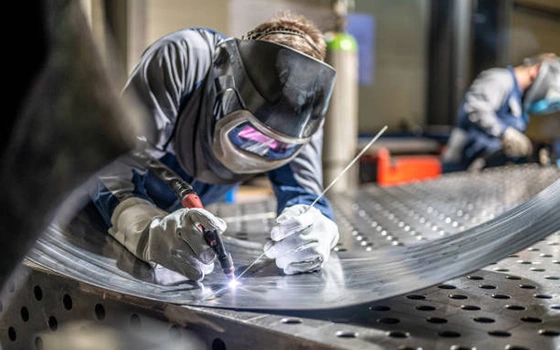

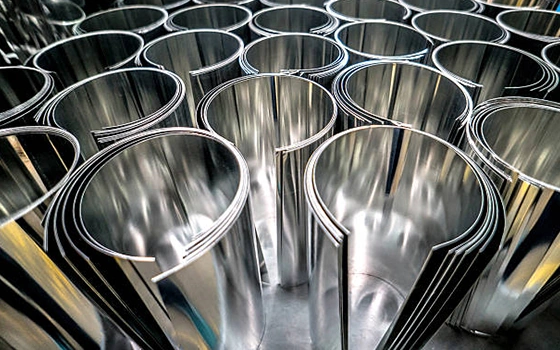
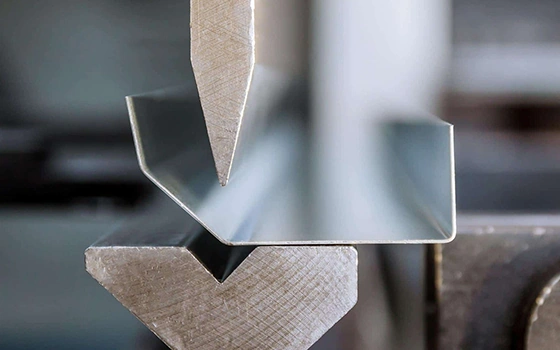
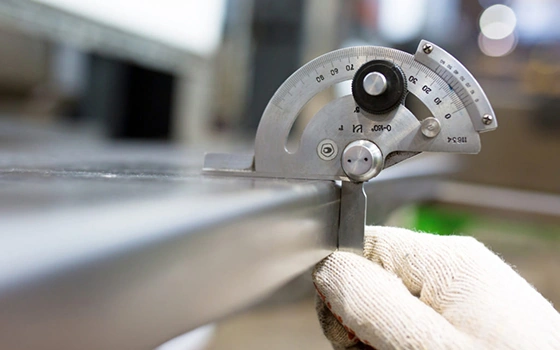
- Experienced Craftsmanship
- Strict Quality
Control - High-Quality Materials & Hardware
- Adherence to Industry Standards
- Continuous Improvement & Innovation
Choosing Michaels Sheet Metal means choosing quality at every step. We know you’re trusting us with your important project, and we take that responsibility seriously. From a simple sheet metal repair or small custom part to a large architectural installation, our commitment to excellence never wavers. It’s all part of delivering a product you’ll be proud to own and use, year after year.
Proudly Serving Los Angeles County and Beyond
Michaels Sheet Metal is locally owned and operated in Southern California. Our headquarters and fabrication workshop are located at 10312 Norris Ave Unit D, Pacoima, CA 91331, in the San Fernando Valley region of Los Angeles. This central location allows us to easily serve all of Los Angeles County and neighboring areas. We love our community, and we’re proud to contribute our skills to projects all across the region – from small towns to famous cities like Beverly Hills.
Looking for custom sheet metal fabrication near me? If you are in the Los Angeles area, look no further! We have completed custom fabrication projects for customers in Beverly Hills, Santa Monica, Pasadena, Encino, Tarzana, Malibu, Culver City, Long Beach, and beyond. Our service area covers the entire L.A. County and often stretches into Ventura County and Orange County for larger projects. In other words, if you have a custom metal need in Southern California, we’re the local experts ready to help.
Many of our clients find us by searching online for terms like “sheet metal fabrication near me” or “custom ductwork near me.” They’re usually thrilled to discover that a top-rated sheet metal fabrication company is right in their backyard! Being local means we can collaborate closely with you: we can visit your site for measurements, you can drop by our shop to see progress, and we’re just a quick call away if you have questions. Local also means faster turnaround and lower shipping costs – often we’ll personally deliver and install the finished product.
We also understand the specific needs of Southern California climates and architecture. Our team has experience working on beachside homes in Malibu (where salt air corrosion is a factor), hillside houses in Hollywood Hills (which may need unique flashing for rainwater), historic buildings in Pasadena (requiring custom-crafted pieces to match original designs), and modern estates in Beverly Hills (demanding the highest cosmetic perfection). This local expertise ensures that your custom sheet metal fabrication is not only expertly made, but also ideally suited for California conditions and local building requirements.
When you work with Michaels Sheet Metal, you’re supporting a local L.A. business with deep roots in the community. We’re not a faceless national corporation; we’re your neighbors and we truly care about our reputation in the community. In fact, most of our business comes from word-of-mouth referrals and repeat customers – the ultimate sign of trust.
So, if you’re searching for “custom sheet metal fabrication near me” and you’re in the Los Angeles area, you’ve found your perfect partner. We are happy to discuss your project and even give you a tour of our facility so you can see our craftsmanship first-hand. For clients outside of our immediate area, we’re also able to work remotely via phone/email and can ship finished pieces as needed. No matter where you are in California, when you choose Michaels Sheet Metal, you’re getting the best in the business.
FAQ’s
-
What is custom sheet metal fabrication?
Custom sheet metal fabrication is the process of cutting, bending, and assembling metal sheets into unique products or components tailored to specific needs. At Michaels Sheet Metal, we specialize in custom sheet metal fabrication for residential, commercial, and architectural projects throughout Los Angeles and Beverly Hills.
-
What types of sheet metal fabrication services do you offer?
We offer a wide range of sheet metal fabrication services, including custom ductwork, architectural sheet metal, gutters, flashing, planters, wall panels, and more. Our services are fully customizable and designed to meet the unique requirements of each project.
-
Do you provide custom ductwork near me in Los Angeles County?
Yes! We provide custom ductwork fabrication throughout Los Angeles County, including Beverly Hills, Pasadena, and surrounding areas. Our ductwork is built to spec and follows SMACNA guidelines to ensure efficiency and longevity.
-
Are you a licensed sheet metal fabricator?
Yes, we are a fully licensed and insured sheet metal fabricator based in Pacoima, CA. With over 30 years of experience, we are one of the most trusted sheet metal fabricators in the Los Angeles region.
-
What materials do you use for custom sheet metal work?
We work with a variety of metals including copper, stainless steel, aluminum, zinc, and galvanized steel. Our custom sheet metal work is designed for durability and aesthetic appeal, perfect for architectural and structural applications.
-
Do you offer architectural sheet metal fabrication?
Absolutely. We specialize in architectural sheet metal fabrication for projects requiring precision, design, and functionality. From custom fascias and wall panels to decorative trim, our work enhances both form and function.
-
How is your sheet metal cutting and forming done?
Our custom sheet metal cutting is performed with CNC laser, plasma, and waterjet machines for clean and accurate cuts. We use press brakes and rollers for custom sheet metal forming, ensuring a precise fit for each piece.
-
Can I get a quote for custom sheet metal fabrication near me?
Yes! If you’re in or near Los Angeles County—including Beverly Hills, Santa Monica, or the San Fernando Valley—just give us a call or fill out our contact form. We’ll provide a free quote with no obligations.
-
What makes Michaels Sheet Metal different from other sheet metal fabrication companies?
We combine 30+ years of experience, high-quality craftsmanship, and local service. Unlike large-scale manufacturers, we focus on custom sheet metal fabrication services tailored to your specific needs, backed by friendly and personal customer care.
-
Do you serve both residential and commercial clients?
Yes, we provide sheet metal and fabrication services for both residential and commercial properties. Whether it’s a custom planter for your backyard or HVAC ductwork for a commercial building, we can help.
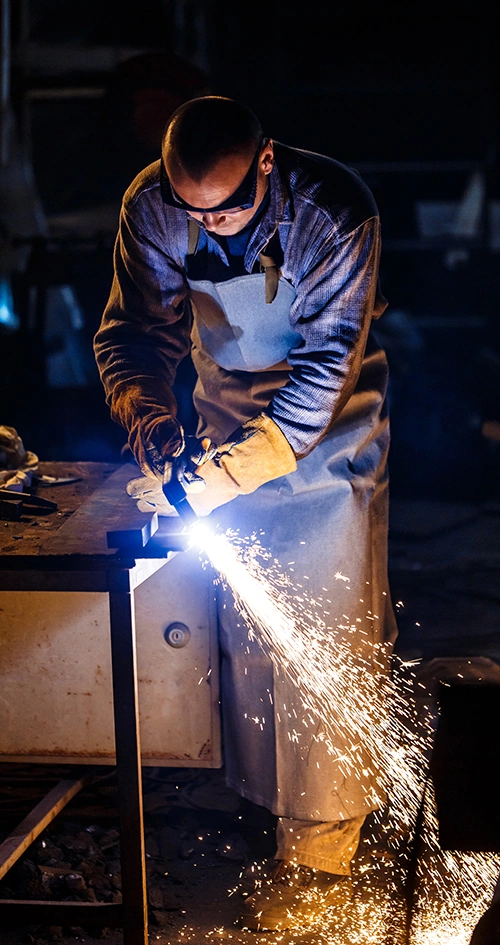
Ready to Start Your Custom Metal Project? Contact Us Today!
If you have a project in mind – big or small – don’t hesitate to reach out. Getting started is easy, and we’re here to guide you through the process. Contact us today for a free consultation and quote on your custom sheet metal needs.
When you reach out, there’s no obligation and no pressure. Our initial consultations and quotes are completely free. We know that custom sheet metal work is a big decision and an investment – you might want to compare options or just gather information, and that’s totally okay. We’re confident that once you speak with us and see what we can offer, you’ll understand why so many clients choose Michaels Sheet Metal for their fabrication needs.
Transform Your Ideas into Reality: If you’ve been searching for the right team to handle your sheet metal custom fabrication project, you’ve found them. From custom sheet metal cutting and forming to full design-build solutions, Michaels Sheet Metal is ready to deliver outstanding results. Let us show you how easy and rewarding it can be to get exactly the metal product you need, custom-built for you.
Don’t settle for off-the-shelf solutions that “almost” meet your needs – get the perfect fit with our custom sheet metal fabrication services. Reach out to us by phone or email, and let’s turn your vision into reality!
Get in touch with Michaels Sheet Metal today, and discover why we’re Los Angeles County’s preferred custom sheet metal fabricators! We look forward to working with you and being your partner in fabrication for years to come.
(Serving Los Angeles County, including Beverly Hills, Santa Monica, Malibu, Pasadena, the San Fernando Valley, and surrounding communities.)
















